Do you want to develop an app like Venmo?
Being one of the most popular names in the P2P payment world, this app has been the inspiration behind many of the great platforms people use today.
Even today, Venmo keeps inspiring businesses and startups alike to develop their own payment solutions.
And the first question that comes to mind when considering cloning this app is:
“How much does it cost to develop an app like Venmo?”
On average, the cost to develop an app like Venmo would range between $75,000 and $175,000. The cost depends on a lot of factors like complexity, platform, size, and so on.
Now, there’s a lot that goes into cost estimation apart then what meets the eye. And understanding all of that is a crucial part of planning to create an app like Venmo.
So, without further ado, let’s get started with the basics.
Venmo: America’s Most Popular Payment App (With a Social Twist)
Venmo is a mobile payment service that allows users to easily send and receive money between friends, family, or anyone else with a Venmo account.
It integrates social features, letting users add a message to their payments, which can be seen by their friends on the Venmo feed.
The app is available on both iOS’s App Store and Android’s Play Store.
Venmo was founded in 2009 by two friends, Andrew Kortina and Iqram Magdon-Ismail, who wanted an easier way to split expenses after a weekend trip to New York City.
As the most popular and used payment app in the USA, the platform holds a significant share of the peer-to-peer (P2P) payment market in the United States, particularly popular among millennials and Gen Z.
That’s how the platform has gathered over 83 million active users. Plus, payment statistics show us, Venmo made over $230 billion in total payment volume.
Top Features of Venmo
Now, if you want to build an app like Venmo that outclasses the subject, you can’t ignore the feature.
The payment app’s feature plays a crucial role in the market’s success.
Therefore, to have a chance at becoming the next big P2P payment platform, let’s look at some important features that you should include.
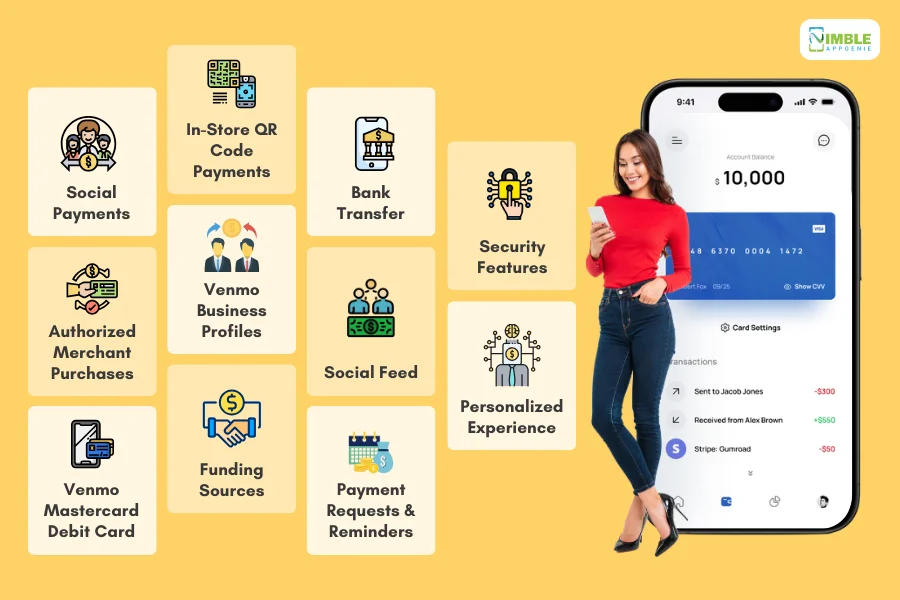
Social Payments
Venmo revolutionizes how we handle shared expenses, allowing friends to effortlessly split bills for meals, entertainment, or rent, fostering a community-oriented financial experience.
Authorized Merchant Purchases
The platform extends its utility to shopping, enabling users to seamlessly transact with a broad network of authorized merchants, both online and in brick-and-mortar stores, streamlining the payment process.
Venmo Mastercard Debit Card
This feature offers the flexibility to use Venmo funds anywhere Mastercard is accepted in the U.S., effectively bridging the gap between digital and physical payment realms.
In-store QR Code Payments
Venmo leverages QR code technology for secure and quick in-store payments, enhancing user convenience and safety by minimizing physical contact.
Venmo Business Profiles
Businesses can tap into Venmo’s vast user base by setting up profiles to accept payments, making it easier for customers to pay for goods and services in a familiar and trusted environment.
Funding Sources
Users can link multiple funding sources, including bank accounts and cards, to their Venmo accounts, offering unparalleled flexibility in managing their finances.
Bank Transfers
Venmo simplifies the process of transferring money to a bank account, with transfers typically completed the next business day, facilitating quick access to funds.
Social Feed
The app’s social feed feature allows users to engage with their network by sharing and commenting on transactions, adding a social dimension to financial interactions.
Did you know that the most commonly used emoji on Venmo is the pizza slice🍕? It’s often used to split the bill after ordering pizza with friends.
Payment Requests and Reminders
Venmo makes it easy to request payments from friends and send reminders for owed amounts, ensuring that users can manage their shared expenses without awkwardness.
Security Features
Venmo prioritizes user security through features like PIN codes and biometric authentication, safeguarding financial transactions and personal information.
Personalized Experience
The platform allows users to personalize transactions with notes, emojis, and tags, enriching the payment experience with a personal touch and context.
Now that we are done with the features of the Venmo-like app, you must also know that they affect the cost to develop a Venmo clone as well.
So, how does this happen?
Well, as the general rule of thumb goes, features (depending on their type) add to the complexity, which in turn affects total Venmo-like app development cost.
Why Develop an App Like Venmo?
A question even more common than, “How much does it cost to develop a Venmo-like app ?” is,
“Why Develop An App Like Venmo?”
Whether you are a fintech company or a startup with an amazing idea, there are various motivations to develop a payment app.
With this being said, let’s look at reasons to invest in app development:
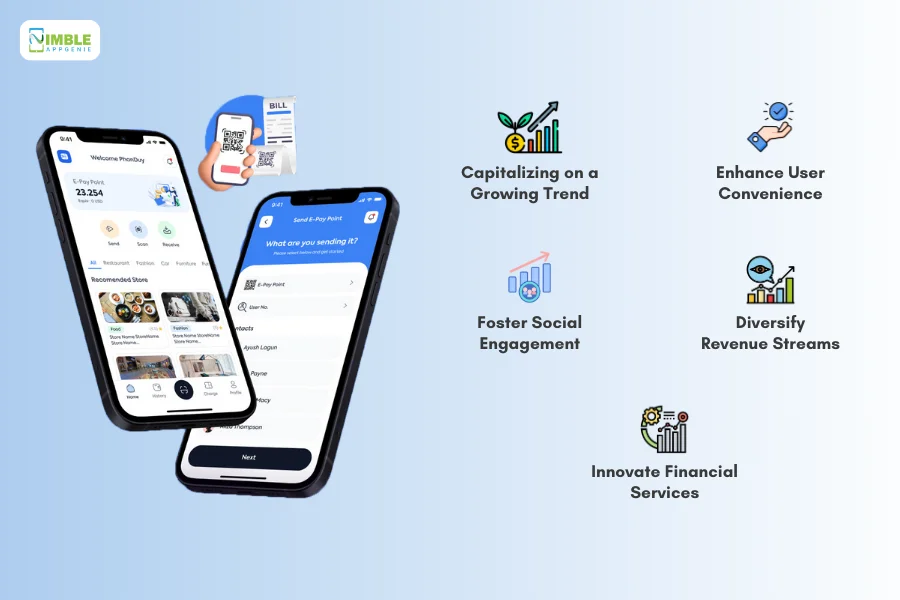
1. Capitalizing on a Growing Trend
Truth be told, the P2P market is booming.
According to fintech statistics, the global P2P market size is expected to reach a staggering USD 6,043.03 billion by 2027.
This signifies a growing consumer preference for convenient and instant money transfers, especially among millennials and Gen Z.
By entering the market now, you can position your app to capture a share of this ever-expanding user base.
2. Enhance User Convenience
Want to be successful among users?
Well, one of the ways to do so is to develop your own app like Venmo and keep users satisfied.
By streamlining financial transactions such as bill splitting and money transfers, an app like Venmo can significantly simplify everyday financial tasks for users.
Thus, making it an indispensable tool in their daily lives.
3. Foster Social Engagement
What makes Venmo stand out (and compels so many businesses to develop Venmo clones) is its social features.
Take a page from Venmo’s playbook and incorporate social elements.
A newsfeed where users can track spending habits or send friendly nudges when bills are due can foster user engagement and create a sense of community.
Celebrities are just like us! Many famous personalities, including Chrissy Teigen, Ellen DeGeneres, and even Elon Musk, have been spotted using Venmo for everyday transactions.
4. Diversify Revenue Streams
Want to make a lot of money? Well, who doesn’t?
Beyond basic transaction fees, such an app can introduce premium services, partner with merchants for offers, or even venture into financial products, creating multiple channels for app monetization.
5. Innovate Financial Services
A key lesson for fintech startups is, always innovative.
And by making your own Venmo clone, you are doing just that, one of the big reasons to do so.
By leveraging data and user behavior, the app can offer personalized financial advice, budgeting tools, and investment options, positioning itself as a comprehensive financial hub for users.Top of Form
So, these are the reasons to go for Venmo clone app development. And with this out of the way, it’s time to come back to the original query: the cost of building a venmo clone.
Also Read: Cost to Develop an App Like Apple Pay
Average Cost to Develop an App Like Venmo
It’s time to answer the big question.
What is Venmo-like app development cost?
Well, the average venmo clone app development cost ranges from $75,000 to $175,000 depending on various different factors ranging from complexity, features, size, platform, tech stack, and so on.
Now, if you want to get an accurate cost estimation, it’s highly recommended that you consult an app development company.
Why? The cost for every payment app project is super unique. And to get accurate cost estimation, you need to consult experts who will give you a custom quote.
Speaking of which, for now, let’s focus on factors. There are many of these affect the cost to build a Venmo-like platform. To grasp the concept at a better level, we shall be going through each factor in detail.
Factors That Affect Venmo Like App Development Cost
One of the most important parts of understanding “How much it cost to create an app like Venmo?” is understanding the factors that affect it.
You see, there are various things involved in payment app development costs.
Now, in a bid to understand this, let’s start with basic factors and move towards more advanced ones. These are:
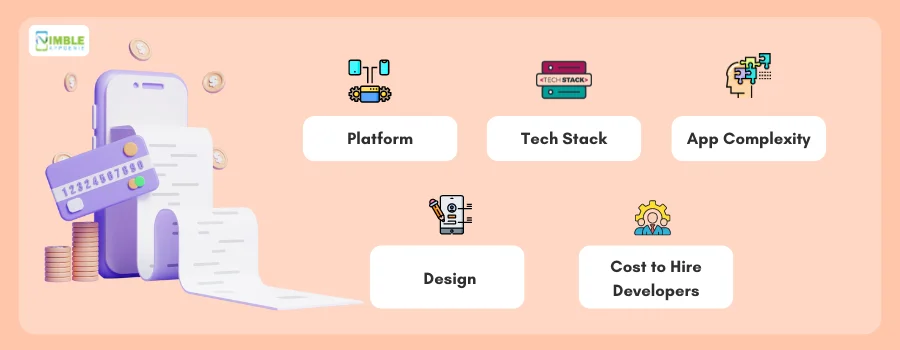
1] Platform
When you are estimating Venmo clone app cost, the first factor to consider is a platform.
Whenever you are developing a mobile application, it’s one of the first decisions to choose between iOS app development, android app development, and cross-platform app development.
If you are looking for more options, you can even option to build a payment web app.
Here’s how each of the platforms affect the cost.
| Platform | Cost Range Impact |
| iOS App Development Cost | $75,000 – $125,000 |
| Android App Development Cost | $75,000 – $125,000 |
| Both iOS & Android Cost | $125,000 – $175,000 |
| Web App Development Cost | Adds $25,000 – $50,000 to the chosen platform(s) |
Choosing the right platform is one of the most important parts of the entire app development process. In any case, once you have finalized the platform, it’s time to choose the tech stack.
2] Tech Stack
Let’s talk tech stack.
For those who don’t know, it refers to the set of technologies that are used in mobile app development, covering everything from programming language, framework, toolkit, testing tools, and so on.
Now, the payment app’s tech stack plays an important role in its success as well as the budget of Venmo clone app development.
Here’s a detailed breakdown.
| Components | Technology Options | Development Cost Range | Description |
| 1. Frontend (Mobile App) | React Native, Swift (iOS), Kotlin (Android) | $25,000 – $50,000 | User interface and experience on mobile platforms. React Native allows for cross-platform development, reducing costs. |
| 2. Backend Development | Node.js, Django, Ruby on Rails | $30,000 – $60,000 | Server-side logic, including APIs, database management, and third-party integrations. |
| 3. Database | PostgreSQL, MongoDB | $5,000 – $15,000 | Storing user data, transaction records, and app metadata securely. |
| 4. Payment Gateway | Stripe, PayPal, Braintree | $10,000 – $25,000 | Handling secure and reliable in-app transactions. |
| 5. Security | OAuth, JWT, SSL/TLS encryption | $10,000 – $20,000 | Ensuring data protection, secure transactions, and user authentication. |
| 6. Cloud Services/Hosting | AWS, Google Cloud, Azure | $5,000 – $15,000 | Scalable and reliable hosting for app services, databases, and backend logic. |
| 7. Development and Testing | JIRA, Selenium, Jest | $5,000 – $15,000 | Project management, automated testing, and quality assurance throughout development. |
Choosing the right tech stack is super important as it affects not only the cost to build venmo clone but also the performance of the app in the long run.
3] App Complexity
Finally, it’s time to look at one of the biggest factors, namely, complexity.
The complexity of the app development process greatly affects the cost. We will go as far as to say that it is the single most important factor when assessing cost to build an app like venmo.
So, how does it work? Here’s how:
| Complexity Level | Features and Functionalities | Development Cost Range | Description |
| Basic |
| $75,000 – $100,000 | Includes the most essential features for a functional P2P payment app. Limited customization and simple UI/UX design. |
| Intermediate |
| $100,000 – $125,000 | Adds more user engagement and security features. Increased focus on user experience and interface design. |
| Advanced |
| $125,000 – $150,000 | Incorporates high-end security measures and personalized user experiences. May include more complex financial services. |
| Highly Advanced |
| $150,000 – $175,000 | Introduces cutting-edge technology and features for enhanced scalability and versatility. Extensive backend development and integration. |
4] Design
Want to develop a payment app that captures a user’s attention just like Venmo does?
Well, the keyword to focus on is UI/UX design.
The payment app’s design plays a significant role in user retention, customer experience, and overall satisfaction of the audience.
| Design Complexity | Design Elements and Features | Design Cost Range | Description |
| Basic |
| $5,000 – $20,000 | Focuses on fundamental usability with minimalistic design elements. Suitable for MVPs or apps with a very clear and narrow use case. |
| Intermediate |
| $20,000 – $40,000 | Introduces more personalized design elements and interactive features to improve user engagement. Includes more detailed wireframes and prototypes. |
| Advanced |
| $40,000 – $75,000 | Involves comprehensive branding and high-level design consistency across all screens. Focus on creating a memorable user experience. |
| Highly Advanced |
| $75,000 – $100,000 | Incorporates state-of-the-art design techniques and technologies for a highly immersive and interactive user experience. This may include A/B testing for design elements. |
The concept of mobile payments can be traced back to ancient China, where merchants used promissory notes made of silk or paper.
5] Cost to Hire Developers
It’s time to find an app developer.
As one might assume, acquiring or partnering with a fintech app development company is one of the most expensive parts of the entire development process.
Now, there are two major criteria here, the first one being:
Location of Developers
The location of app developers will highly affect Venmo clone app cost. Here’s how and how much:
| Location | Cost Range per Hour | Description |
| North America | $100 – $200 | The high cost of living and strong demand for developers drive higher rates. |
| Western Europe | $70 – $150 | Rates vary widely with strong tech hubs in the UK, Germany, and others. |
| Eastern Europe | $40 – $100 | Offers a balance of quality and cost, with a growing tech industry. |
| Asia | $20 – $70 | Cost-effective rates with a large talent pool, especially in India and China. |
| Latin America | $30 – $80 | Emerging tech market with competitively priced development services. |
| Africa | $20 – $60 | Growing tech talent pool with competitive rates, especially in tech hubs like Nigeria and Kenya. |
Experience
Cost to hire an app developer highly depends on the experience of the developer as well. Here’s how it works:
| Experience Level | Cost Range per Hour | Description |
| Junior Developer | $20 – $50 | Less than 3 years of experience. Suited for basic tasks and learning on the job. |
| Mid-Level Developer | $50 – $100 | 3-5 years of experience. Can handle more complex tasks independently. |
| Senior Developer | $100 – $200 | Over 5 years of experience. Capable of leading projects and complex problem-solving. |
| Specialist/Expert | $150 – $300+ | Deep expertise in specific areas. Often sought for consultancy and high-impact projects. |
How Long Does It Take To Make Venmo Clone?
With that, we are done with the cost aspect of building a Venmo app.
Now, let’s answer “How long it takes to develop an app like Venmo?” Average development time ranges from 6 to 9 months.
Let’s look at a breakdown below:
| Phase | Estimated Time | Description |
| Planning | 2-4 weeks | Requirements gathering, feasibility study, and project scope definition. |
| Design | 4-6 weeks | UI/UX design, wireframing, and prototype creation for user interface and experience. |
| Development | 12-24 weeks | Coding of front-end and back-end components, integration of payment gateways, and security measures. |
| Testing | 4-8 weeks | Functional and non-functional testing, bug fixing, and performance optimization. |
| Deployment | 1-2 weeks | App launch, server setup, and deployment to app stores. |
Time plays an important role in any development project, especially in high-fund projects like Venmo clone development. Thus, affecting total cost as well.
In any case, now that we are done with development time, let’s look at how to get some of that hard-earned money back via revenue.
Also Read: How to Build a Payment App Like Cash App?
How to Make Money With App Like Venmo?
Payment apps make a lot of money or that’s what fintech statistics show us.
So, how can you make money with an app like Venmo?
Here’s how payment apps make money and how you make your first million dollars via Venmo clone. These are, as mentioned below:
In 2013, Venmo processed over $1 billion in transactions, highlighting the rapid rise of mobile payments.
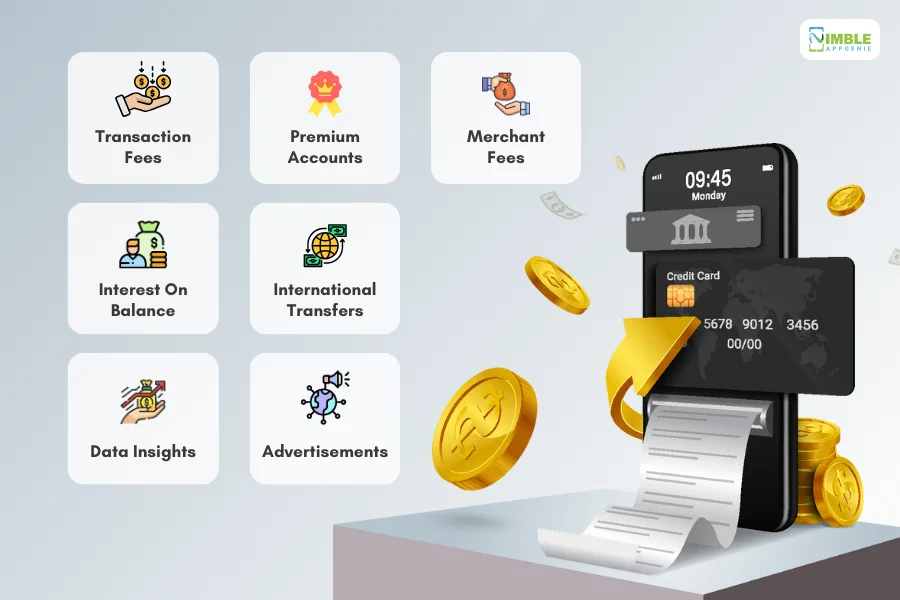
Transaction Fees
While basic P2P transactions are usually free, the app could charge a small fee for instant transfers to bank accounts or for using credit cards instead of bank transfers or debit cards.
Premium Accounts
Offering premium account features for a monthly or yearly subscription can be a way to monetize. Premium features might include higher transaction limits, advanced security features, or exclusive offers and discounts.
Merchant Fees
Partner with businesses and online merchants to allow users to pay through the app at their establishments or websites. The app can charge merchants a small percentage of each transaction as a fee.
Interest on Balances
If users maintain a balance within the app, the company could invest these funds and earn interest, a portion of which could be revenue.
Advertisement
Displaying unobtrusive ads within the app can be a source of revenue. These could be targeted based on user spending habits and preferences.
Data Insights
Aggregate and anonymize transaction data to provide valuable insights to third parties like market researchers, retail businesses, or financial analysts, while ensuring user privacy and compliance with regulations.
International Transfers
Charge a fee for international money transfers, which often require currency exchange and entail higher processing costs. Much like how Transferwise-like apps do.
Nimble AppGenie – Your Partner in Payment App Development
Do you want to develop your own payment app like Venmo?
Partner with experienced payment app development company, Nimble AppGenie, and leave all your worries behind.
Don’t worry about the Venmo app development cost, don’t worry about delivery, or anything else.
With experience in developing some of the best payment apps in the market, we have what it takes to develop the next best.
We have done it before:
- Pay By Check– Pay by Check is a popular ewallet mobile app in the United States of America. It allows users to transfer, pay, or even exchange currency.
- DafriBank– Digital Bank of Africa is a leading banking portal that also allows users to trade cryptocurrencies and provides e-wallet advantages.
- SatPay– An eWallet platform is a Versatile eWallet Solution that allows users to request, receive, and send payments without hassle.
- CUT– an E-wallet Mobile App, CUT is available in China and Myanmar. It works well with both RMB and MMK currencies.
- SatBorsa– a Currency Exchange Fintech app. SatBorsa is one of the platforms that is available on both platforms, iOS and Android.
Recognized by top platforms like Clutch.co, GoodFirms, and DesignRush, we are up for the challenge.
Hire app developers with a click to get it done.
Conclusion
To develop an app like Venmo involves meticulous planning, comprehensive understanding, and strategic execution. Venmo’s success story underscores not just its popularity but also the vast opportunities within the P2P payment market.
The estimated cost to develop a Venmo-like app falls between $75,000 and $175,000, subject to various factors such as platform choice, tech stack complexity, and app design intricacy.
However, beyond monetary investment, the decision to create such an app resonates with the desire to enhance user convenience, foster social engagement, diversify revenue streams, and innovate financial services. It’s not merely about replicating an existing model but about sculpting a unique solution that addresses evolving consumer needs.
So, whether driven by entrepreneurial spirit or technological innovation, developing a payment app like Venmo is an endeavor poised to shape the future of digital finance.
FAQs
By entering the P2P payment market, you can tap into a rapidly growing trend. With Venmo’s success and the increasing preference for convenient and instant money transfers, developing a similar app can position you to capture a share of this expanding user base.
Several factors influence the development cost, including platform choice (iOS, Android, or both), tech stack complexity, app design, and overall app complexity. Additionally, hiring developers with varying levels of experience and location can impact costs. On average, developing an app like Venmo can cost between $75,000 and $175,000.
Developing an app like Venmo typically takes between 6 to 9 months. This timeframe includes planning, design, development, testing, and deployment phases.
There are several monetization strategies for a Venmo-like app, including transaction fees for premium features, merchant fees for in-app transactions, interest on user balances, advertising, data insights, and fees for international transfers.
Developer rates vary based on their location, with higher rates in North America and Western Europe compared to Eastern Europe, Asia, Latin America, and Africa. Factors such as cost of living and demand for developers influence these rates. On average, the cost to hire developers ranges from $75 to $200 per hour.
Developer rates also vary based on their experience level. Junior developers typically command lower rates, while senior developers and specialists with extensive experience command higher hourly rates. On average, junior developers may cost $20 to $50 per hour, while senior developers or specialists may cost $150 to $300+ per hour.

Niketan Sharma is the CTO of Nimble AppGenie, a prominent website and mobile app development company in the USA that is delivering excellence with a commitment to boosting business growth & maximizing customer satisfaction. He is a highly motivated individual who helps SMEs and startups grow in this dynamic market with the latest technology and innovation.
Table of Contents




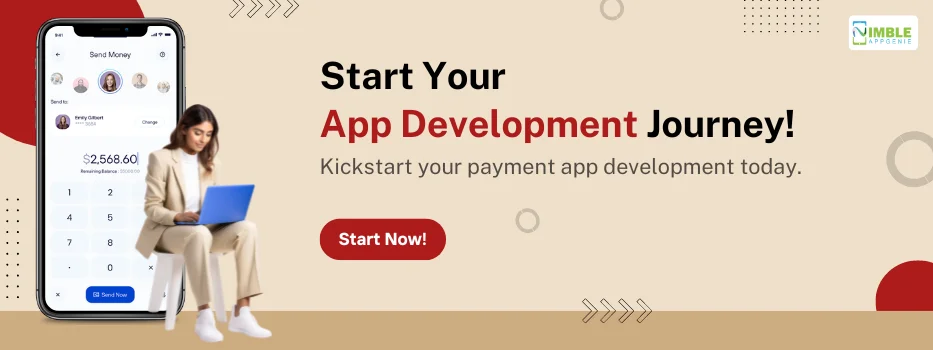
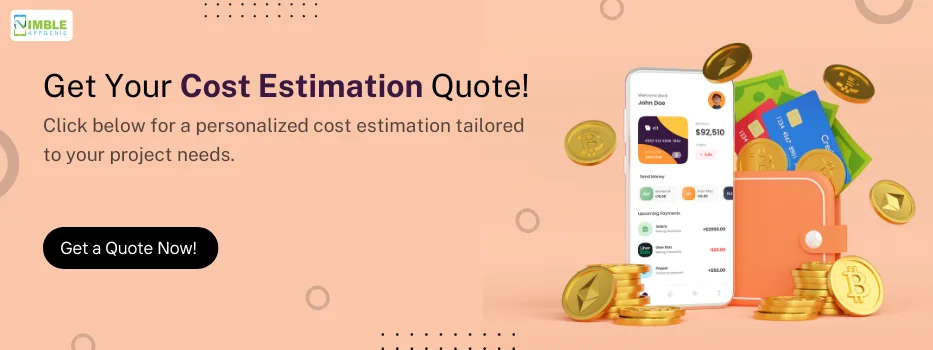








No Comments
Comments are closed.